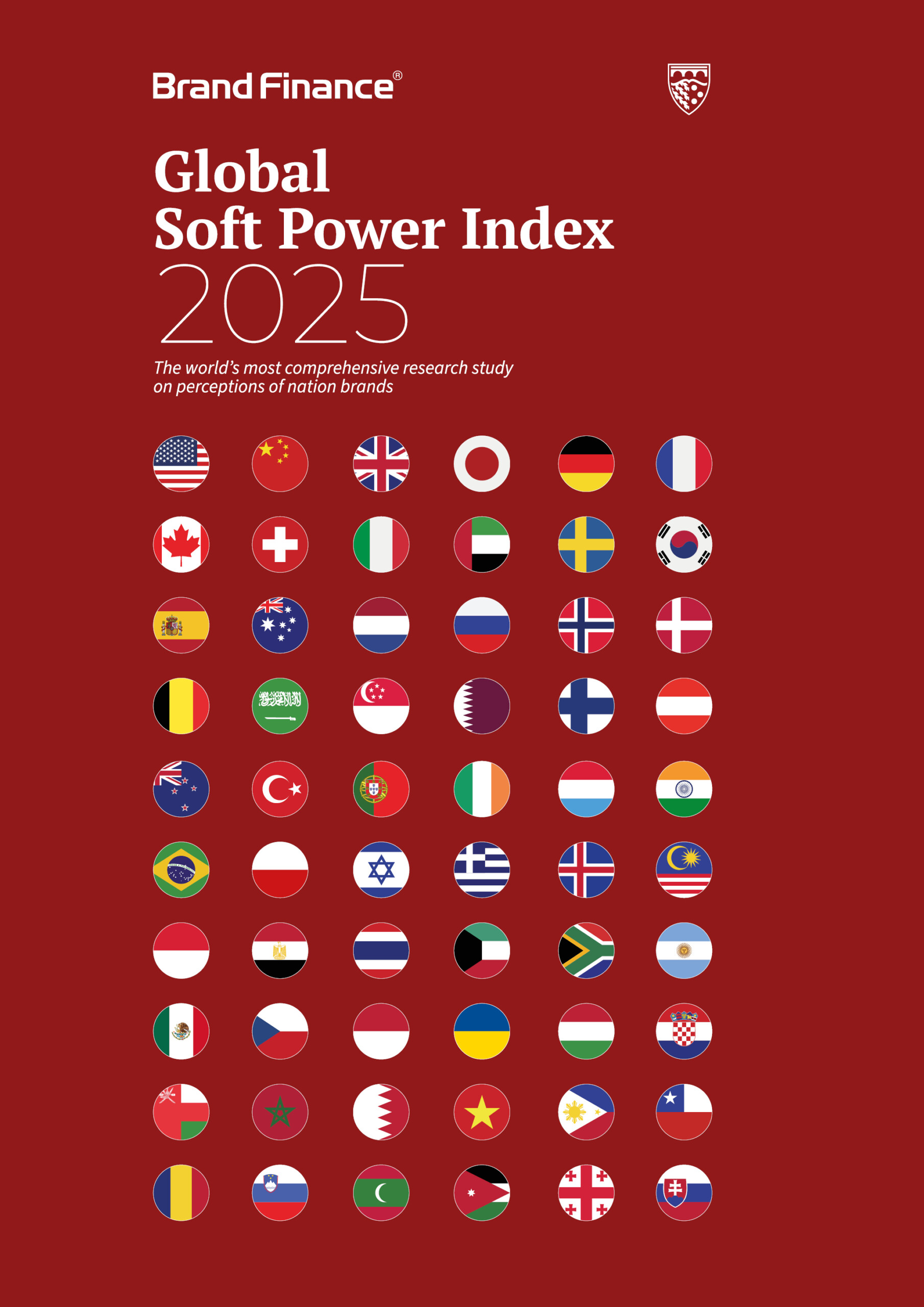This article was originally published in the Brand Finance Global Soft Power Index 2025

Cañizares Director, Emerging
Markets Institute & Senior
Lecturer, Samuel Curtis
Johnson Graduate School of
Management, Cornell University

Faculty Fellow,
Emerging Markets
Institute,
Cornell University
The Emerging Markets Institute at Cornell University publishes a yearly report focusing on the growth of emerging market multinationals, defined as those with headquarters in an emerging market. If we look at metrics such as the growth of gross domestic product per capita, poverty reduction, and life expectancy, emerging markets have done very well in the first quarter of the twenty-first century. Parallel to this success, we have seen a growth in companies hailing from those countries.
In 1990, Fortune launched the Fortune Global 500, the list of the 500 biggest companies in the world based on revenues. The United States led the list with 167 companies, followed by Japan, a strong contender with 111 firms. The UK was a distant third, with 43 firms.
Five years later, in 1995, when Fortune added service companies to the Fortune Global 500, the number of Japanese entries reached 149 compared with 151 for the US, evidence of Japanese economic power in the 90s. Thirty years later, the US’ strongest competitor is no longer Japan but China, signalling a shift in power.
The leaders of the 2024 list are 139 American firms and 128 from China but only 40 from Japan. The United States also dominates the list of the top 30 largest companies while only six are emerging market multinational corporations (EMNCs), all from China: Sinopec Group, China National Petroleum, China State Construction Engineering, Industrial & Commercial Bank of China, and China Construction Bank.
Who are these newcomers? Initially, a low-price strategy was enough to fend off Western competitors and solidify the place of Chinese (and Korean) firms in products like smartphones.
However, competing successfully globally requires soft power as well, for instance, strong brand recognition. As emerging market multinationals’ market shares increased, so did their brand recognition and ability to set prices in line with companies hailing from developed markets. Noteworthy examples of efforts to increase brand recognition include Huawei’s marketing campaigns in Europe and Gulf countries, including glitzy storefronts, and the advertising campaigns of Haier in Europe. This trend gained momentum even against the backdrop of the U.S.-China trade war. As Huawei fell prey to restrictions and penalties in the United States, it also increased its market share globally and became number two in the world in smartphones, competing with Apple and Korean Samsung. As expected, overall brand recognition of Chinese firms made headway, according to Brand Finance research.
From 2010 to 2025, the United States has dominated the Brand Finance Global 500 ranking of the top 500 most valuable brands in the world, making up 39% of all the highest-value brands, and its representation on the world stage increased by 7.4 percentage points. The growth of the U.S. brands mirrored the loss by other G-7 firms. The rising presence of the E20 (the biggest 20 countries according to the Emerging Markets Institute definition1), was mostly driven by Chinese firms whose share in the top 500 global brands increased from 4% of the list to 14%. Meanwhile, the share held by all other E20 nations decreased by 4.2 percentage points to 3%.
Emerging markets other than China have not done very well overall.
According to Brand Finance 2025, Latin America’s brand recognition has remained relatively flat, with only four brands featured among the most valuable 500 in the world, while emerging markets in Asia, with the exception of India (15 brands), barely registered a few entries on the list in 2025.
The country which saw the largest drop in representation was Japan, with 18 fewer high-value brands in 2025 than at the start of the last decade. Increased competition with China in Asian markets and the consistent economic contraction over the last few decades could explain Japan’s loss of high-value brands. European brands, in general, saw a decline in their top 500 brand representation. France still tops the UK and Germany in this ranking, with a total number of 35 brands in the top 500 in the 2025 list of top 500 brands. Italy remained stable throughout the previous decade, with thirteen major brands included in the 2025 list.
Many E20 countries either had no firms or just a few made the Brand Finance Global 500. Besides China, the most notable increase comes from India, rising through the ranks from 8 to 15 high-value brands over the past decade.
One could expect that firms from emerging markets will continue increasing their homegrown brand values in the next decade as their economies continue to grow. The perception of the quality of Japanese and then Korean products rose, and Chinese brands are following the same path, a trend expected to continue. The same pattern is unfolding in services, as the airlines outside of the US and Europe are perceived as increasingly higher quality.
What is still unknown is how better brand recognition will impact the low-cost business strategies of emerging market multinationals. Smartphones and television may provide clues as to how this will play out – some of the prices from emerging markets’ brands increased, which in turn forced U.S. and European firms to offer products and services at lower prices and, in the end, question their internal strategies and long-term vision.
By combining lower prices and soft power, Chinese firms have become serious competitors, eating into the traditional markets of advanced country firms as well as in emerging markets. The trend will likely continue as we can expect more soft power and brands from Chinese companies in the future.

